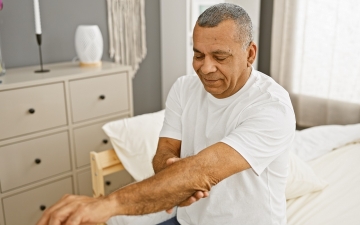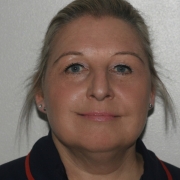
‘Hospital at home (HAH) manages patients in their own home for a condition that otherwise would require inpatient care’ [1] – it’s simple, isn’t it?
As Dorothy in the Wizard of Oz said, ‘there’s no place like home’ and in my opinion, there is no doubt that given the option most people would prefer to remain in their own home and receive care. After all, being at home is great! Eating and drinking your own food, relaxing in a familiar environment. No one wants to go to hospital and struggle with the challenge to get there, parking costs, exposure to infection, fear of the unknown, the smells and noise and least of all the food.
In this article, I’ll explore the concept of HAH, and discuss which patients may be suitable, and where there may need to be more consideration in managing these strategies as they grow older.
The evolution of the hospital
Hospitals came from ancient Greeks in 400bc, although looked nothing like the hospitals we recognise. They were temples for cure – erected to enable a diagnosis, treatment, and healing – a model we still identify with today. Hospitals alongside hospital care has continued to evolve over many years with bigger changes developing post the industrial revolution when hospitals were modelled based on a ‘working line’ to make them more efficient. Now with greater demand and costs, we need to revolutionise again.
It has been suggested that hospital-at-home interventions represent a viable substitute to an in-hospital stay for patients with chronic diseases [2] with a large percentage of hospital care considered to be as effective when delivered at home and a good alternative to hospital care for many. Researchers have found HAH led to no more deaths, less people being admitted to care homes, and people and carers preferred to be at home rather than in hospital. [3]
HAH advantages
The advantages of HAH are evident when we look at the possible consequences of hospital care. An increased risk for loss of functional independence and chronic disability is among the adverse consequences of acute care hospitalisation.[4] Coupled with low staffing levels, [5] increased stress, burn out, [6] and increases in clinical negligence ‘constituting a major threat to the sustainability of the NHS’ [7] it’s no wonder people are postponing visiting a hospital for care until the problem is too big to manage or life threatening, or would rather have care at home.
Advances in technology and remote monitoring at home may mean detection of early deterioration before a patient feels ill. [8] There is obvious savings on bed days used, not to mention a reduction in stress and anxiety to the patient and carers who can continue to do what is important to them whilst receiving care.
Opportunities in respiratory care
In respiratory care there are many opportunities for people to be treated at home, the most obvious being those with exacerbation of COPD with teams delivering admission prevention and early discharge services;[9] these have been widespread for many years. Respiratory infections requiring IV antibiotics, those that may need some additional diuretic therapy and monitoring for people who are COVID-19 positive at risk of deterioration are a few conditions now badged on a virtual ward or under a HAH team.
In the community and HAH services, patient acuity has been increasing in recent years, [10] however, in hospital we are used to having all the resources, testing facilities and equipment to manage their care. Now, I believe we need to look at training and development for staff managing home care, including learning programmes and curriculum, to enable staff to work in a very different way to traditional models.
We are looking at a paradigm shift to acknowledge community care and how it enhances patient experience and takes the strain from hospitals. I believe we need to look at standards of practice and a professional framework for staff with the emphasis not on reducing hospital admissions but providing a choice to people to have their care where they want and how they want. I think this will encourage better communication and collaboration alongside new career and job opportunities in the community.
Technology advances
Taking advances in technology to the max, there are some that see the day ahead beginning with stepping on a ‘smart’ scale to analyse weight, looking in a ‘smart’ mirror to analyse stress levels and pulse rate, using a ‘smart’ toothbrush to measure hydration and urinating in the micro chipped toilet for urine analysis! There’s also automatic reduction in shower temperature, ‘smart’ sleep monitoring that will wake you at your most energised, work desk monitoring your best time for work performance alongside 3D printers for food, eaten with ‘smart’ knives and forks.
I’m not sure we are ready for this completely new age, but I guess we are willing and it’s reasonable to think differently about where care is best delivered. What we need to be asking ourselves and our patients include; can their care be delivered outside of an acute hospital setting? Are there ongoing investigation needs? Do they need frequent review of care and management, regular monitoring? Can treatment only be delivered in hospital? The best care means agreeing what benefits the patient the most, through consulting with the patient on what’s right for them alongside the best clinical decision.
Any advice given and opinions expressed in this article are those of the author and do not reflect the view of Chiesi Limited (Chiesi). All content in this article is for informational and educational purposes only. Although Chiesi strives to always provide accurate information, it is not responsible for and does not verify for accuracy any of the information contained within.
[1] Northumbria Healthcare NHS Foundation Trust. Hospital at Home Manual. Available at: https://thorax.bmj.com/content/thoraxjnl/73/8/713/DC3/embed/inline-supplementary-material-3.pdf?download=true
[2] Arsenault-Lapierre G, Henein M, Gaid D, et al. Hospital-at-Home Interventions vs In-Hospital Stay for Patients With Chronic Disease Who Present to the Emergency Department: A Systematic Review and Meta-analysis. JAMA Netw Open. 2021;4(6)
[3] NIHR. Hospital at home is a good option for many older people. Available at: https://evidence.nihr.ac.uk/alert/hospital-at-home-good-option-older-people/
[4] Loyd C, Markland AD, Zhang Y, et al. Prevalence of Hospital-Associated Disability in Older Adults: A Meta-analysis. J Am Med Dir Assoc. 2020;21(4):455-461
[5] The King’s Fund. Staffing shortfall of almost 250,000 by 2030 is major risk to NHS long-term plan, experts warn. Available at: https://www.kingsfund.org.uk/press/press-releases/staffing-shortfall-major-risk-nhs-long-term-plan
[6] Iacobucci G. Staff burnout: MPs demand “total overhaul” of NHS workforce planning. BMJ. 2021;373:n1461
[7] Yau CWH, Leigh B, Liberati E, et al. Clinical negligence costs: taking action to safeguard NHS sustainability. BMJ. 2020;368:m552
[8] NHS England. Remote monitoring for patients with chronic conditions in the Midlands. Available at: https://transform.england.nhs.uk/covid-19-response/technology-nhs/remote-monitoring-for-patients-with-chronic-conditions-in-the-midlands/
[9] Rodríguez-Roisin R. COPD exacerbations.5: management. Thorax. 2006;61(6):535-544
[10] Baker E, Loreto Facultad J, Slade H, Lee G et al. A new tool to measure acuity in the community: a case study. British Journal of Community Nursing. 2021 Oct;26(10):482-492



 Joanne King
Joanne King 

